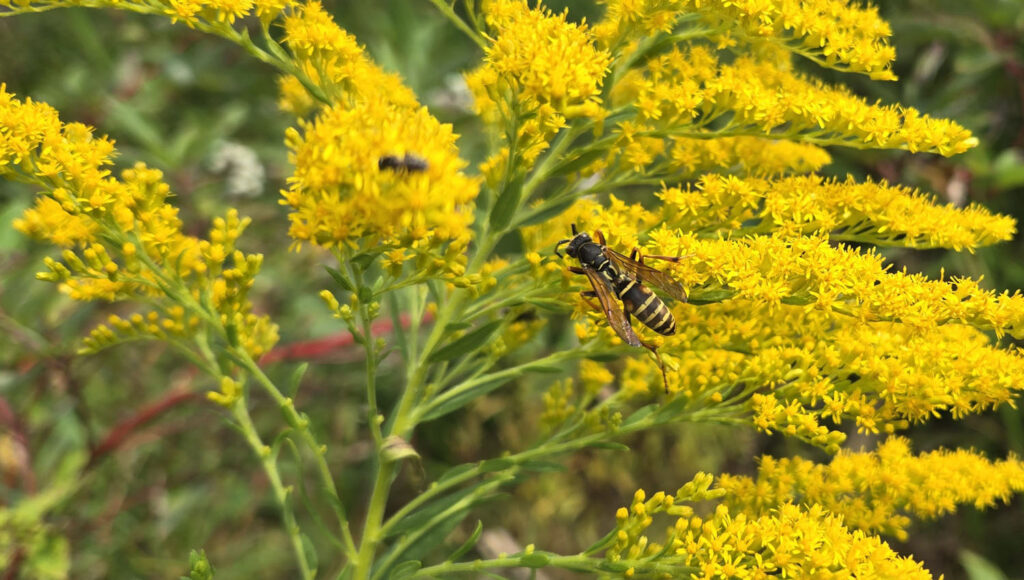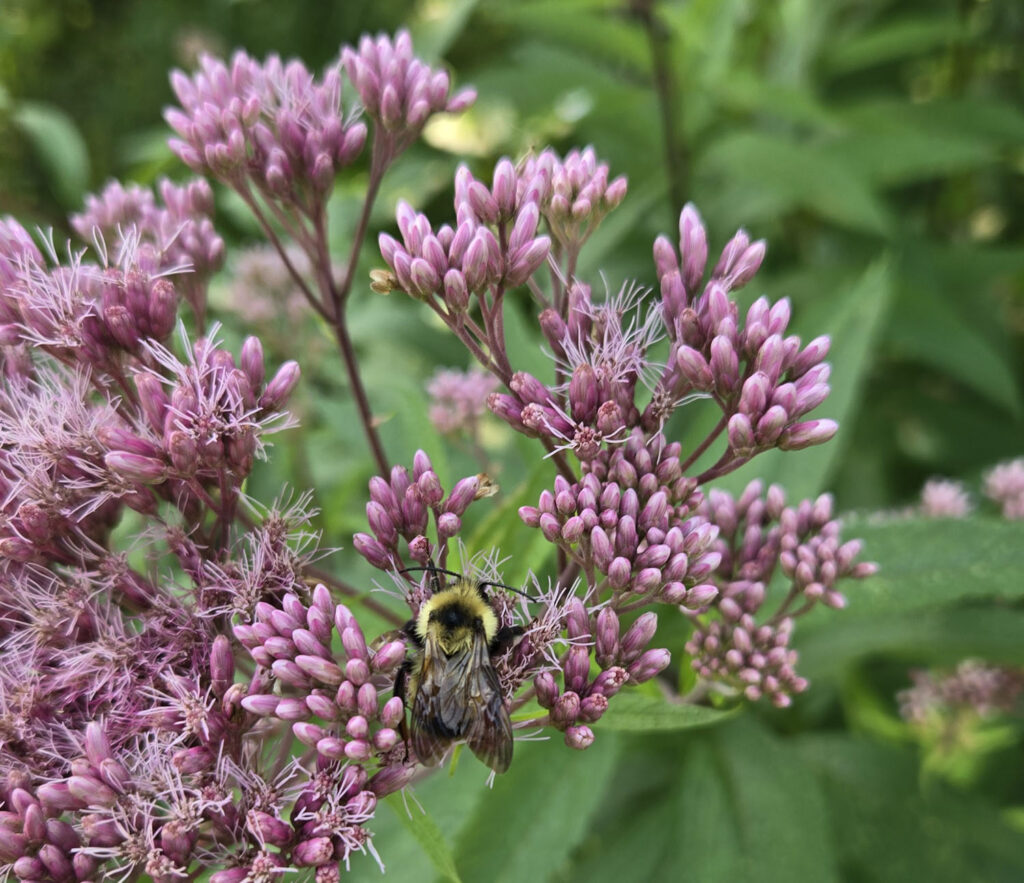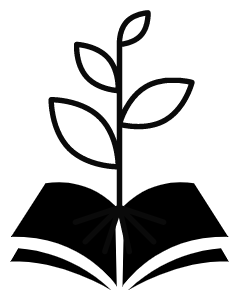
Native-seed harvesting: Why it matters and how to do it right
As mid-September settles over Minnesota, the prairies, woodlands and gardens begin their quiet shift toward autumn. For anyone with a love of plants, this is a season of opportunity. Native-seed harvesting is more than a seasonal chore; it’s a way to preserve biodiversity, support pollinators, and reconnect with the land.
Whether you’re a seasoned gardener or just curious about native plants, this guide will walk you through the why and how of collecting native seeds in Minnesota.
Why native seeds?
Native plants are those that have evolved in a region over thousands of years, adapting to local soils, climate and wildlife. In Minnesota, this typically refers to species that were present before European-American settlement, around the 1850s. These include prairie grasses like prairie dropseed and side-oats grama, wildflowers like black-eyed Susan, prairie clover, and golden alexander, and woodland species like wild columbine and bloodroot. So why do we focus on native seeds?
1. They support local wildlife
Native plants are essential food and habitat sources for Minnesota’s pollinators, birds and other wildlife. Many insects, including butterflies and bees, rely on specific native plants to complete their life cycles. Monarch caterpillars, for example, can only survive on native milkweed species. Similarly, the Baltimore Checkerspot butterfly depends on turtlehead to complete its life cycle.
Rusty patched bumble bees, a federally endangered species, forage on a wide range of native flowers but show strong preference for wild bergamot (bee balm), Joe-Pye weed and prairie clover. Other native bees rely on golden alexander, blue vervain and sunflowers, which offer accessible pollen and nectar at key times of the season. Early spring bees depend on woodland wildflowers like bloodroot and wild geranium, while late-season pollinators turn to blazing star and sneezeweed.
All of these relationships are delicate and irreplaceable. By planting and protecting native species, we support not just individual insects but entire food webs, from pollinators to the birds and mammals that rely on the fruits and seeds those plants produce.
2. They’re resilient and low maintenance
Because they’re adapted to local conditions, native plants typically require less water, fertilizer and pest control. They thrive in Minnesota’s climate and soils, making them ideal for sustainable landscaping and restoration projects.
3. They preserve biodiversity
Collecting and planting native seeds helps maintain genetic diversity within plant populations. This is especially important as habitats shrink and climate conditions shift. By growing plants from local seed sources, we help ensure that future generations of plants are well-suited to their environment.
4. They prevent the spread of invasives
Non-native plants, even those that seem harmless in gardens, can escape into wild areas and outcompete native species. Harvesting and spreading non-native seeds–even unintentionally–can contribute to ecological imbalance.
Expert guidance and community resources
The University of Minnesota Extension provides a wealth of resources on native plant conservation, pollinator support and ecological restoration. Their research and outreach programs emphasize the importance of using locally adapted native seeds to restore prairies, improve soil health, and support declining pollinator populations.
Through initiatives in natural resources and the Master Gardener program, Extension educators promote responsible seed collection, habitat restoration, and community-based conservation efforts. Their guidance helps Minnesotans make informed choices about what to plant, how to care for native species, and how to contribute to long-term ecological resilience.

Another valuable resource is the MN SEED Project, which offers training, events and community support for native seed collection and propagation across the state.
How to harvest seeds responsibly
Harvesting native seeds is simple, but requires care and respect for the landscape. Here’s how to do it:
- Know your plants: Use field guides or apps like iNaturalist to identify native species accurately. If you’re unsure, don’t collect. Misidentification can lead to spreading non-native or invasive species.
- Some beginner-friendly species to harvest include butterfly milkweed, rattlesnake master, wild bergamot (bee balm), and blazing star. These plants are not only beautiful but also vital to pollinators, and their seed heads are easy to identify and collect when mature.
- Harvest at the right time: Seeds are ready when they’re dry, brown, and fall easily from the plant. Avoid collecting green or immature seeds. You can also try the “fingernail test.” If a seed dents easily, it’s not mature.
- Let seeds ripen fully on the plant: This is essential. Seeds must complete their development cycle on the plant to be viable. Premature harvesting (when seeds are still green or soft) can result in poor germination. Look for signs of maturity like color change, dry texture and natural release. For example, prairie grasses,like little bluestem, will shed seeds with a gentle shake when ripe.
- Take only what you need: A good rule is to collect no more than 20 to 50% of available seed heads from any one plant population. Some experts recommend staying closer to 20% to ensure enough seeds remain for wildlife and natural reseeding.
- Use the right containers: Always collect seeds in paper envelopes or paper bags. Plastic traps moisture, which can lead to mold and spoilage. Paper allows seeds to breathe and dry naturally.
- Label everything: Include the plant’s name, date, and location. This helps track your collection and ensures seeds are used appropriately.
- Respect land ownership: Always get permission before collecting seeds on public or private land. Many parks and preserves require permits or prohibit seed collection entirely.
What to do with harvested seeds
Once harvested, store your seeds in a cool, dry place. A closet or pantry works well. Keep them in their labeled paper containers until you’re ready to plant or share.
One great way to share your seeds is through local seed libraries. Washington County Library offers Seed Libraries at Hardwood Creek Library in Forest Lake and Wildwood Library in Mahtomedi. These libraries provide free seeds for vegetables and native plants, and they welcome donations at the end of the growing season. While you don’t need a library card to participate, it’s best to check their guidelines before donating to ensure your seeds are appropriate for their collection.
Seed libraries also host workshops and events in partnership with Washington County Master Gardeners, making them a hub for community learning and ecological stewardship.
A small act, a big impact
Native-seed harvesting is a quiet, powerful way to care for Minnesota’s landscapes. It connects us to the rhythms of nature and gives us a role in preserving the beauty and resilience of our ecosystems.
So, this September, as the goldenrod blooms and the grasses rustle, take a moment to gather seeds, not just for your garden, but for the future of Minnesota’s wild spaces.
By Kim Ury, Master Gardener volunteer
